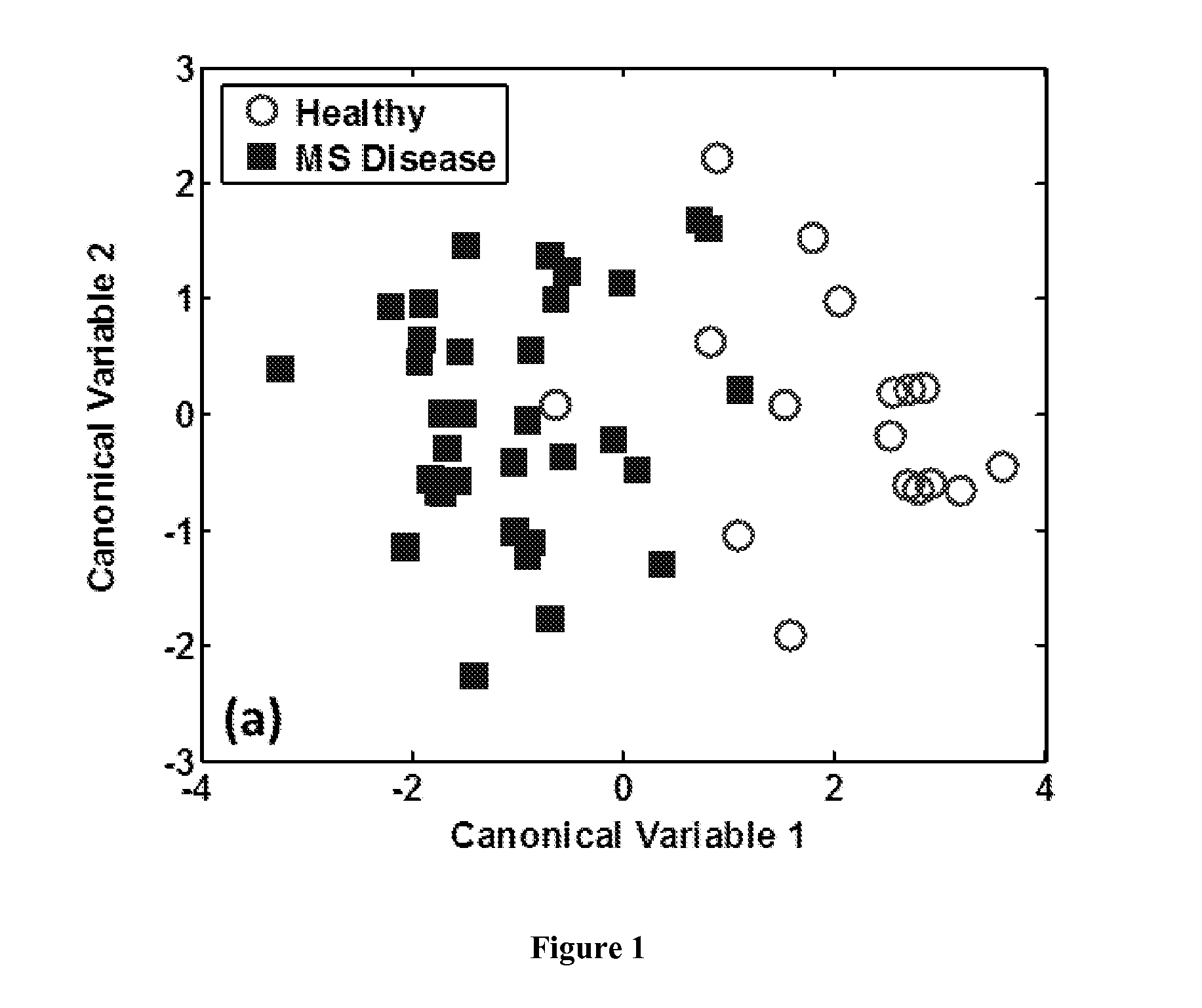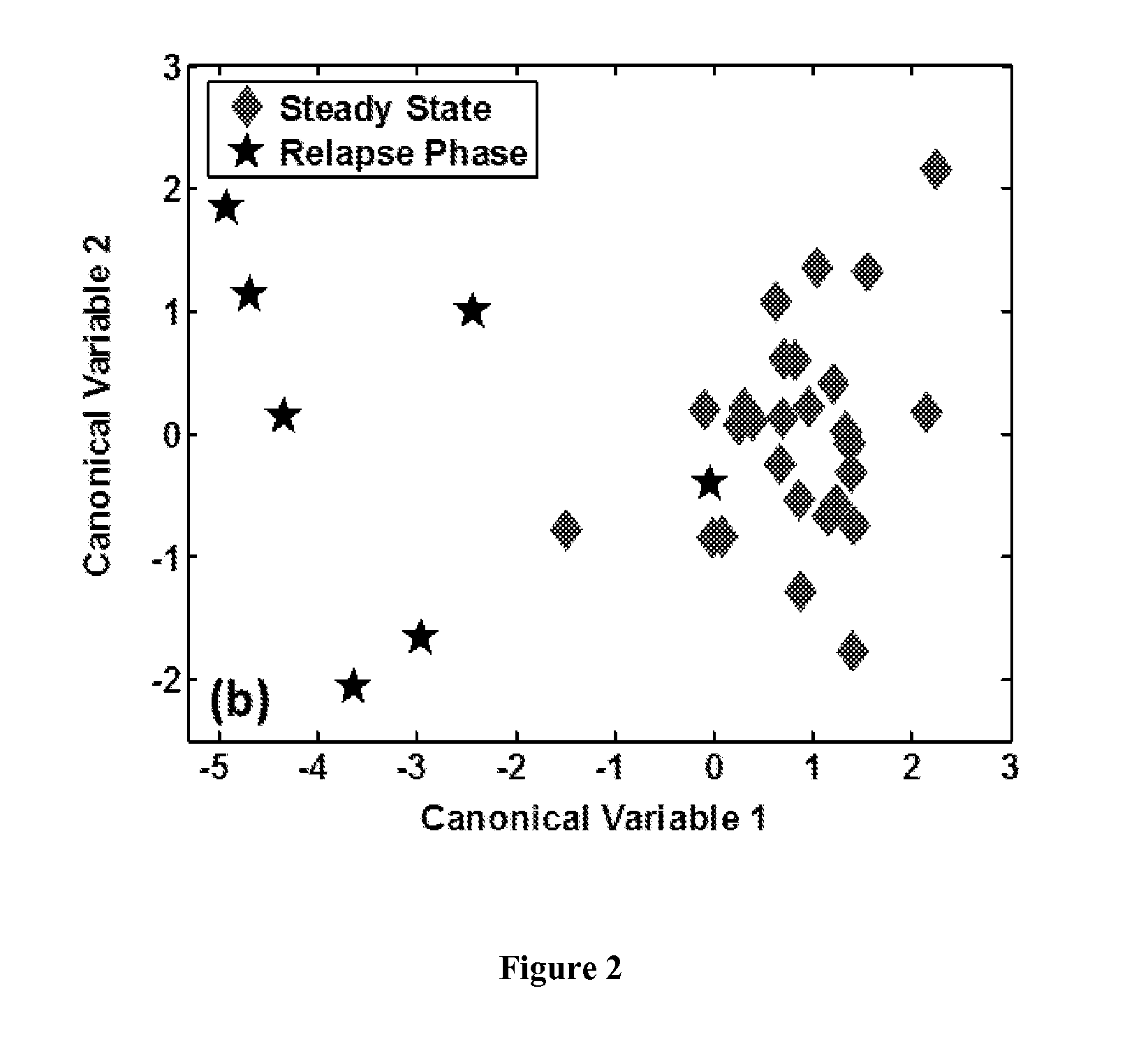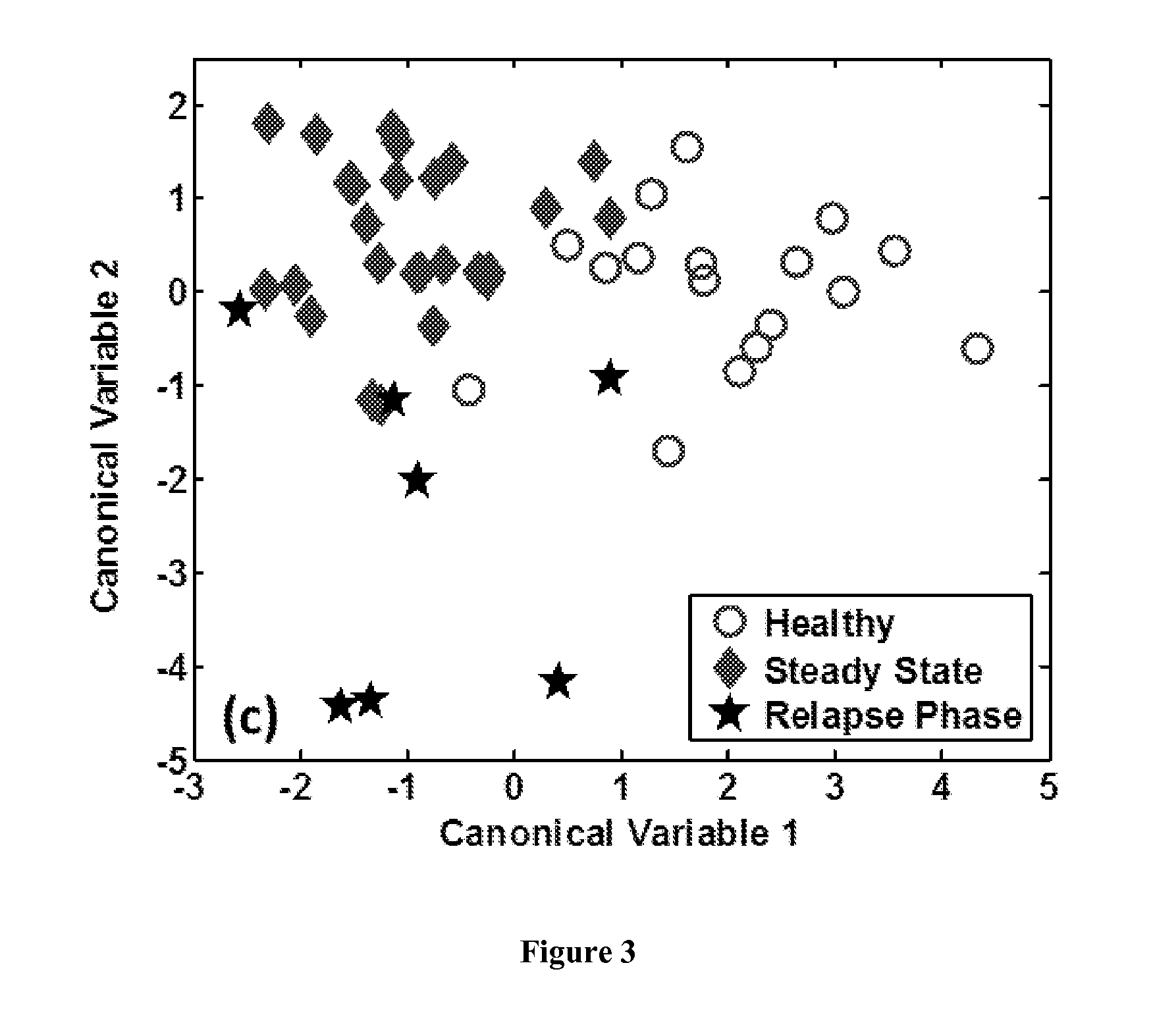Diagnosing, prognosing and monitoring multiple sclerosis
a technology for multiple sclerosis and diagnosis, applied in the direction of instruments, chemical methods analysis, material impedance, etc., can solve the problems of false negative, technique suffers, progressive neurological dysfunction including demyelination and neurodegeneration
- Summary
- Abstract
- Description
- Claims
- Application Information
AI Technical Summary
Benefits of technology
Problems solved by technology
Method used
Image
Examples
example 1
Study design, Test Population and Breath Collection
[0095]Subjects who participated in this study were recruited from the MS patient population of the Carmel Medical Center, Haifa, Israel. The subjects fulfilled the MS clinical criteria of McDonald. Control subjects were recruited from MS patients' escorts to the clinic (unrelated spouse or acquaintance). The healthy control subjects are not afflicted with MS or any other autoimmune disease and were chosen to match the age and gender distribution of the MS subjects. The exclusion criteria from participating in the study comprised patients at the age of 18 or less, pregnant women, subjects afflicted with HIV, hepatitis or any other potentially severe and infectious disease, and healthy individuals with up to third degree relatives having MS or other autoimmune diseases.
[0096]Information regarding the subjects' personal and family medical history was collected via questionnaires as well as from medical records and supplementary forms f...
example 2
Sensor Breath Analysis
[0101]Breath samples were analyzed using the system of the present invention. Specifically, the system was composed of an array of 12 cross-reactive nanosensors based on organically functionalized gold nanoparticles and carbon nanotubes which were kept inside a ˜300 ml sealed test chamber. The sensors and their organic coating are specified in Table 3. The details of the sensor fabrication process are described in Peng et al., Br. J. Cancer, 103, 542-551, 2010; and in Zilberman, et al., ACS NANO, 5(8), 6743-6753, 2011, the contents of which are hereby incorporated by reference in their entirety.
TABLE 3Base materials and organic functionalities of the sensors. The sensorsselected for performing each of the studies are indicated.Healthy-SteadySteadyStateStateMS-MS-RelapseRelapseSensorBaseHealthy-MSPhasePhaseNo.materialOrganic functionalityPatientsMSMS1GNPHexanethiolXX2Decanethiol #1iXX3Decanethiol #2iXX4OctadecanethiolXX5Tert-odecanethiolXX62-Mercaptobenzimidazol...
example 3
Breath Analysis Using Thermal Desorption Gas Chromatography Coupled with Mass Spectrometry (TDGC-MS)
[0105]Gas-Chromatography / Mass-Spectrometry (GCMS-QP2010; Shimadzu Corporation), combined with a thermal desorption system (TD20; Shimadzu Corporation) was used for chemical analysis of the tested breath. A Tenax TA tube (purchased from Sigma-Aldrich) was used for pre-concentrating the volatile compounds of the breath samples. Tube was mounted on a custom made pump apparatus for sample collection from the Mylar bag to the tube with a flow of 100 ml / min. Sample was further transferred to a TD tube (purchased from Sigma-Aldrich) for analysis on the TDGC-MS. The oven temperature profile was: 35° C., 10 min, 4° C. / min to 150° C., 10° C. / min to 300° C., 300° C., 15min. Capillary column SLB-5ms 5% phenyl methyl siloxane (30 m length, 0.25 mm i.d., 0.5 μm thickness) was used (purchased from Sigma-Aldrich). Splitless injection mode for 2 min was used with a constant linear velocity of 30.0 cm / ...
PUM
 Login to View More
Login to View More Abstract
Description
Claims
Application Information
 Login to View More
Login to View More - R&D
- Intellectual Property
- Life Sciences
- Materials
- Tech Scout
- Unparalleled Data Quality
- Higher Quality Content
- 60% Fewer Hallucinations
Browse by: Latest US Patents, China's latest patents, Technical Efficacy Thesaurus, Application Domain, Technology Topic, Popular Technical Reports.
© 2025 PatSnap. All rights reserved.Legal|Privacy policy|Modern Slavery Act Transparency Statement|Sitemap|About US| Contact US: help@patsnap.com



